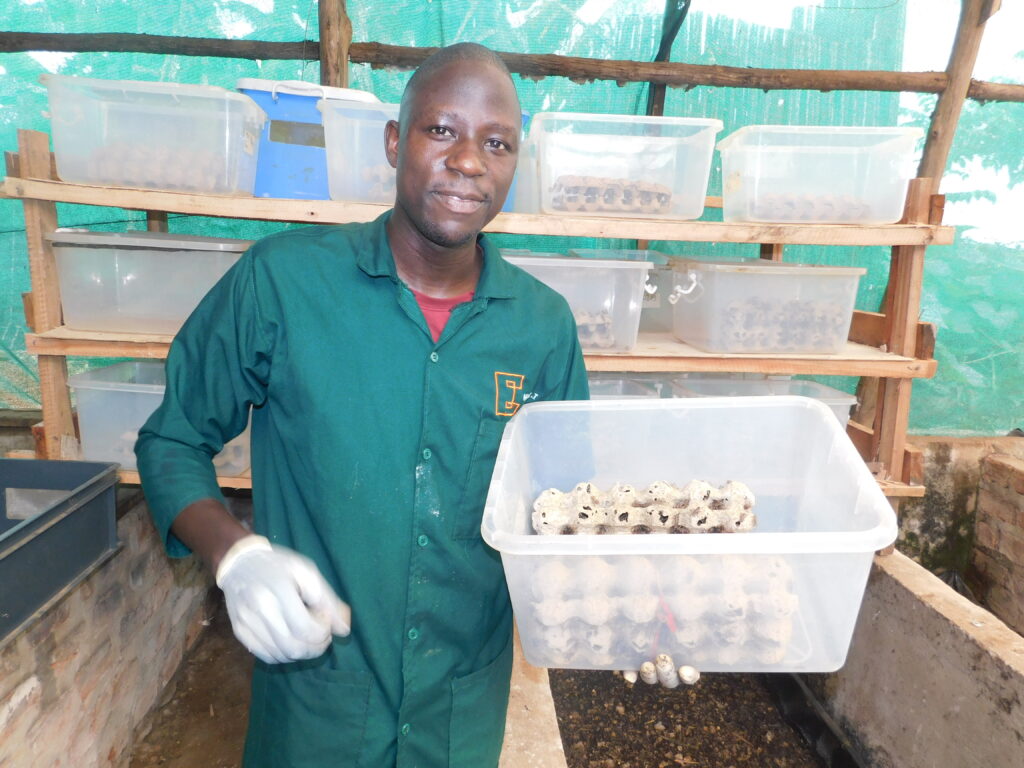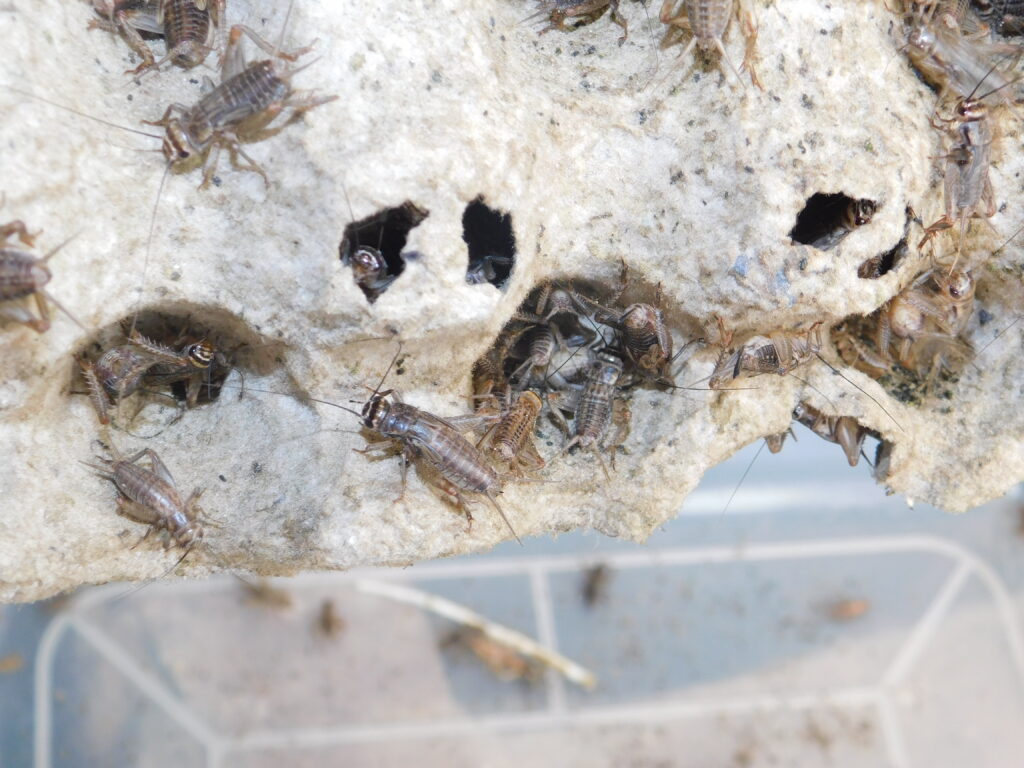By Joshua Kato

Ordinarily, the insects and worms that Tenwya fondly carries are scary to most Ugandans. But to him, this is money, it is a goldmine that few are willing to mine. “These insects are not harmful. They do not sting. They do not even smell, but they are very useful to humans,” he says. Tenwya, who studied agriculture at University is now earning from growing meal worms, crickets and black soldier flies for a living.
Mealworms are the larval form of the yellow mealworm beetle, Tenebrio molitor, a species of darkling beetle. Like all holometabolic insects, they go through four life stages: egg, larva, pupa, and adult. Larvae typically measure about 2.5 centimetres (0.98 in) or more, whereas adults are generally between 1.25 to 1.8 centimetres (0.49 to 0.71 in) in length.
Tenwya says that each of these stages is useful.
Tenwya says that crickets are orthopteran insects which are related to bush crickets, and, more distantly, to grasshoppers. Crickets have mainly cylindrically shaped bodies, round heads, and long antennae. Behind the head is a smooth, robust pronotum. The abdomen ends in a pair of long cerci; females have a long, cylindrical ovipositor. Diagnostic features include legs with 3-segmented tarsi; as with many Orthoptera, the hind legs have enlarged femora, providing power for jumping.
The front wings are adapted as tough, leathery elytra, and some crickets chirp by rubbing parts of these together. The hind wings are membranous and folded when not in use for flight; many species, however, are flightless. The largest members of the family are the bull crickets, Brachytrupes, which are up to 5 cm (2 in) long.
A male Gryllus cricket chirping: Its head faces its burrow; the leathery fore wings (tegmina; singular “tegmen”) are raised (clear of the more delicate hind wings) and are being scraped against each other (stridulation) to produce the song. The burrow acts as a resonator, amplifying the sound. Crickets are reared as food for pets and zoo animals.
“I sell my crickets to wild life conservation centres like zoos,” Tenwya says.
Look out for Tenwya`s full story in harvest money






